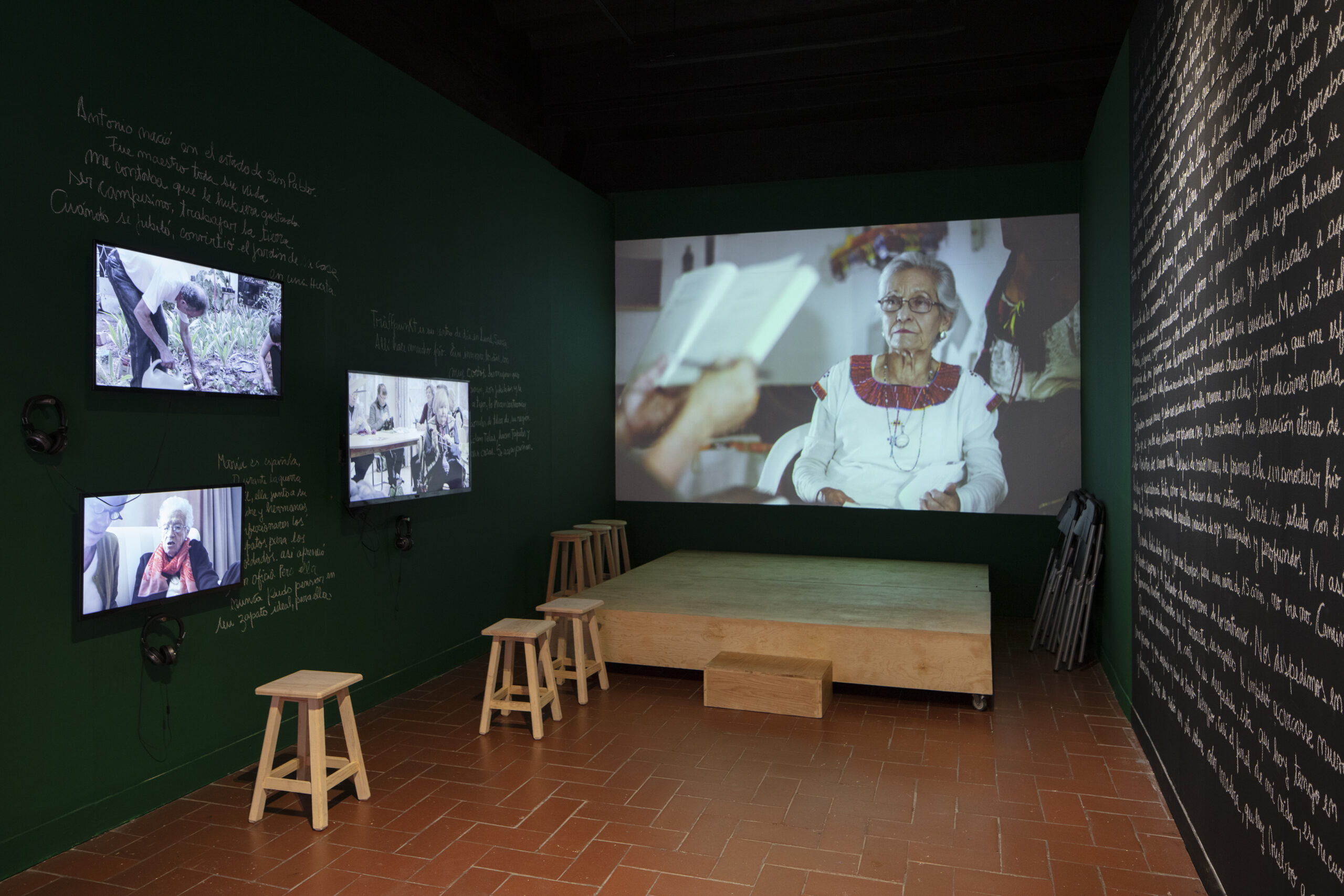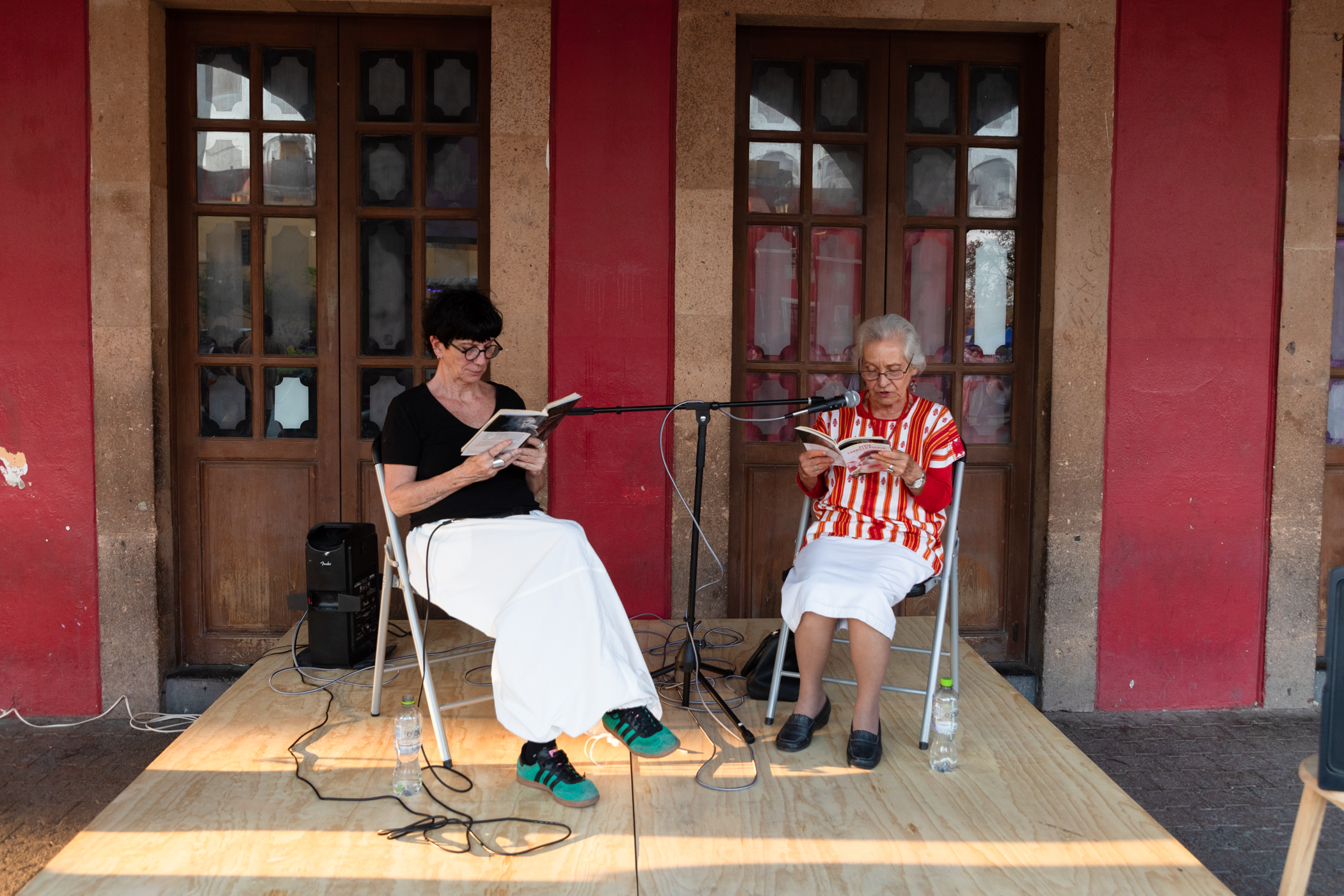Ana Gallardo
(Rosario, Argentina, 1958)
Venues
Galería Eloísa JiménezArtist, arts promotor and docent. Her quest as an artist and her private-life vicissitudes are keenly inseparable. She takes on different planes of violence and is currently focused on the violence of getting old. Her recent solo exhibitions include (Te busco en otro nombre). Bitácora guatemalteca 1987/2022, that won the 2023 Premio de Arte Julius Baer a las Artistas Latinoamericanas prize at the Museo de Arte de Bogotá; as well as Escuela de envejecer, presented at the Parque de la Memoria in Buenos Aires in 2022, after a 2018 exhibition of the same project as part of Ágora: un anteproyecto para la utopía at Mexico City’s Museo Jumex; alongside 2015’s Un lugar para vivir cuando seamos viejos at the Museo de Arte Moderno de Buenos Aires. She participated in the twelfth Bienal del Mercosur, in 2020; 2019’s thirteenth Bienal de La Habana; the 2015 sixty-fifth Venice Biennial; and the twenty-ninth Bienal de São Paulo in 2010; among others. In recent years she has organized independent spaces, such as Periférico and El Espacio Forest, the first-ever self-managed art-space fairs. She is a SOMA docent and directs the Imán and La Verdi projects in Mexico City, where she currently lives.
Lidia, 2006
Chalk on wall, photo, and printed text
Collection of the Museo de Arte Moderno de Buenos Aires (donation from Banco Supervielle, 2022)
Escuela de envejecer, 2024
Installation
Videos, stage, benches, and wall art
In collaboration with the Memorias de Mi Barrio collective (Lluvia Estela Jacobo Juárez, Imylce Morales Carmona, Silvia Rodríguez Fuentes, and Paulina del Carmen Quintana Reyes), Gustavo Crivilone, Francisco Javier González Robledo, M. de la Luz Hernández García, Luz María del Refugio Rivera Nava, Judith Scarpulli Moguel, and Ignacio Rivera Heredia
In this long-term project, Gallardo reflects, alongside others, about old age, a stage of life socially stigmatized for being “unproductive–” especially for women and societal outsiders. The artist organizes dialogues between older adults who detail desires that have been silenced or denied by social, political, or religious mandates. Participants end up forming emotional and social bonds through the process, and the conversations turn into performances, in which participants publicly share their ideas.
Videos on screens show some of the Escuela de envejecer processes in different cities over the years. Another video demonstrates the process with women from León, and Lidia represents the first years in which the artist was reflecting on old age and womanhood. The conversations center on storytelling, specifically, memories of love.
bienal

